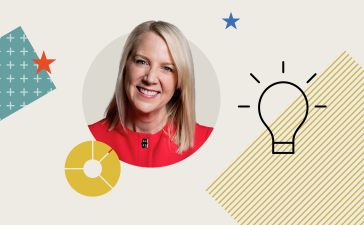Unlock the Editor’s Digest for free
Roula Khalaf, Editor of the FT, selects her favourite stories in this weekly newsletter.
All the will-they-or-won’t-they chatter about December rate hikes has taken the spotlight another important Federal Reserve policy tool: Balance sheet run-off.
This process is meant to be like “watching paint dry” etc — at least compared to the Bank of England’s misadventures with gilt sales. And it is understandable that short-term rates above 5 per cent (!!) are front of mind for investors. But aggressive shrinkage in the Fed’s balance sheet did create the conditions for the mess that hit repo markets four years ago.
For now, at least, Goldman Sachs analysts don’t think there’s much to worry about. They predict the Fed will stop shrinking its balance sheet before bank reserves become scarce enough to cause a market mess. From a Sunday note that was just made public:
The FOMC will likely aim to stop balance sheet normalization when bank reserves go from “abundant” to “ample”—that is, when changes in the supply of reserves have a real but modest effect on short-term rates.
We expect the FOMC to begin considering changes to the speed of run-off around 2024Q3, to slow the pace in 2024Q4, and to finish run-off in 2025Q1.
The determining factor for the Fed’s timeline will probably be the amount of reserves available to banks. To oversimplify a bit, when the Fed buys bonds it creates reserves at US banks, and bank reserves shrink when the Fed’s balance sheet does.
But GS points out that most of the bank-reserve shrinkage happened last year. This year, more of that has drained from balances at the Fed’s reverse repo facility:

GS explains, with our emphasis:
. . . reserve balances have been relatively flat in 2023, and the Fed’s liabilities declined largely because of lower RRP use. RRP balances declined by over $1.5tn to $936bn this year, as increased Treasury bill issuance and higher demand for funding by banks pushed money market funds away from the facility. Looking ahead, we expect RRP balances to continue declining and reach near-zero levels in 2024 as these dynamics continue. Lower RRP balances account for the bulk of the decline in the Fed’s liabilities that we expect over the next year
In other words, bank liquidity is OK on aggregate, at least.
There are plenty of caveats to this. Reserves are still more concentrated at certain banks (we would guess the big ones) than they were before the Covid-19 pandemic, and bank borrowing from Federal Home Loan Banks has picked up a bit recently after a spike during the regional-bank crisis earlier this year:

And borrowing from the Fed’s BTFP facility has remained robust, even though banks haven’t done much discount-window borrowing. (If we remember correctly, the “other credit extensions” category is related to wrapping up banks that failed or were acquired earlier this year):

Banks haven’t had to access the standing repo facility though, which is probably a good thing.
Anyway, GS echoes some Fed economists and academics to estimate that the US central bank will stop balance-sheet roll-off when reserves make up 12 to 13 per cent of bank assets. They give their full projected timeline below:
Our model suggests that short-term rates will start becoming more sensitive to changes in reserves around 2024Q3, and we expect the FOMC to begin considering changes to the speed of run-off at that point and then to slow the pace of balance sheet reduction in 2024Q4 by cutting the monthly run-off caps in half from $60bn to $30bn for Treasury securities and $35bn to $17.5bn for MBS securities.
We expect run-off to finish in 2025Q1, when bank reserves are 12-13% of bank assets (vs. 14% currently), or roughly $2.9tn (vs. $3.3tn currently), and the Fed’s balance sheet is around 22% of GDP (vs. around 30% currently and 18% in 2019). As run-off progresses, we expect the spread of the fed funds rate to the IORB rate to rise by 5-10bp over the next year, from -7bp currently.
There are risks, of course. There’s the uneven distribution of reserves highlighted above, which means smaller and midsized banks could start feeling strain and pushing up repo rates before their larger peers. Banks have more options for funding than other market participants (the standing repo facility, the discount window, the BTFP, etc). But that doesn’t necessarily mean the banks will use them even when needed (see SVB and the discount window).
And of course, there’s always the issue of good old supply and demand:
The key risk to our forecast is that the increased supply of debt that we expect in 2024 causes intermediation bottlenecks in the Treasury market that lead the Fed to stop run-off earlier.








